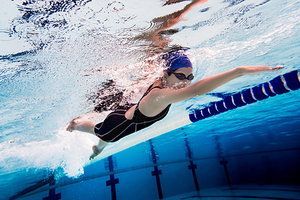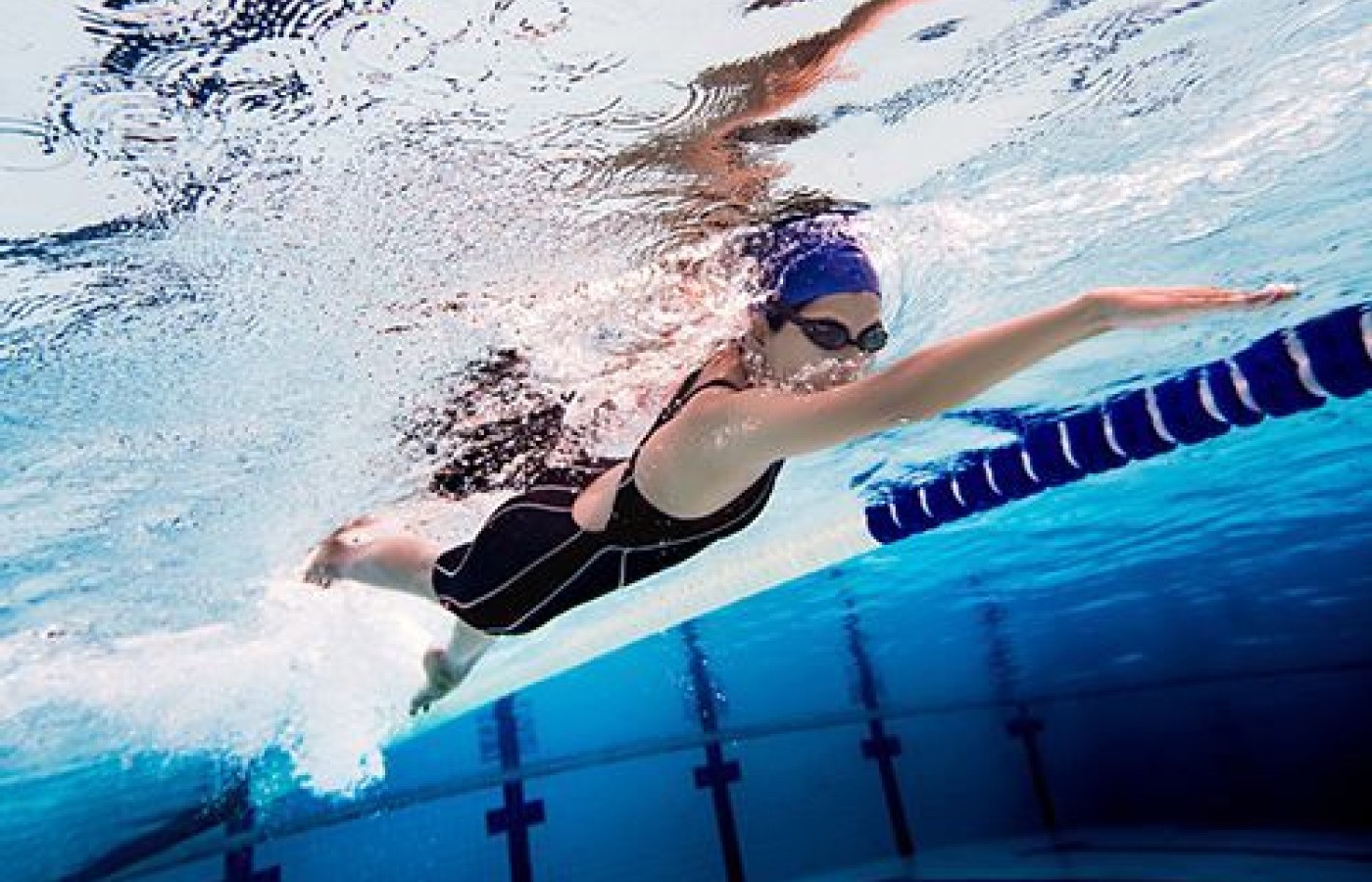Whether you accept it, avoid it or live somewhere in between, insurance coverage has become a defining issue for our profession. Patients increasingly expect to use their benefits, practitioners want to be compensated fairly for their time and expertise, and the system itself remains – at best – fragmented. The encouraging news is that coverage has expanded in meaningful ways. The challenging news is that reimbursement, across the board, remains inadequate.
Acupuncture in Active Sport Recovery—A Review
There is a small body of research that specifically demonstrates the therapeutic viability that acupuncture has to offer in the field of sport and exercise recovery. Research articles such as, "Effects of Acupuncture on Exercise-Induced Muscle Soreness and Serum Creatine Kinase Activity" by researchers, Lin & Yang,1 and "Effects of tender point acupuncture on delayed onset muscle soreness (DOMS) – a pragmatic trial" by Itoh, Ochi, & Kitakoji,2 are some good examples. However, there is a large body of acupuncture research on the many biochemical systems of the body that directly and indirectly attests to acupunctures restorative facility on the body after intense sport performance.3
In today's age, the ever-growing popularity of sports has made the athlete and the industry as a whole, extremely competitive. Pro athletes, college and high school athletes, club athletes, and even the weekend warriors are all striving to be their competitive best. Consequently, this intensifies the physical and emotional demand placed upon them. Athletes are becoming more driven, obsessive, and focused on their sport, and can often neglect the recovery time necessary to perform at these very intensive levels. Increased time with training, practicing, and competing, takes a toll on one's body, and every year it seems to be placing an even bigger demand on an athlete's overall health, subjecting the athlete to injury. Due to this demand many pro athletes need to spend time and money for recovery after routine training and athletic events. Amateur and recreational athletes naturally follow their lead.
How Much Americans Spend on Recovery Treatments

A great deal of money is being spent yearly on active and therapeutic recovery. It is now becoming a separate but booming industry, all on its own. According to Bedosky, the number of people paying for restorative classes in U.S. fitness centers, grew by 16 percent in 2017.4 This overall movement in exercise recovery makes this the fastest-growing trend of 2017.4 Along with health care and wellness clinics adding these services, there are actual retail fitness recovery and sport performance recovery boutiques popping up across the country to serve just this purpose, and this seems this trend is continuing to grow.4
It is now the norm for all competitive athletes to participate in some kind of therapeutic recovery. Recovery strategies are playing a major role in athletic performance, but also allowing older athletes to continue playing and competing at very high levels along with their younger counterparts. In fact, the famous basketball player Lebron James, spends 1.5 million dollars alone on taking care of his body with a big proportion going toward therapeutic recovery.5
The bottom line according to authors St. Pierre, et al. "is that recovery from sport training is a vital component of the overall training program and is essential for optimal performance and continued progression. If the rate of recovery is appropriate, higher training volumes and intensities are possible without the detrimental effects of overtraining, which can include an increased resting heart rate, disturbed sleep, or decreased hunger on multiple days."6
People Want Acupuncture
The demand for acupuncture by the general public has also been on the increase. It is now widely being accepted in the Western medical arena progressively more, due to the momentum it has gained as a viable treatment option for pain management, sport injuries and musculoskeletal conditions. Authors Dominic and Gabriel Lu say, "it has taken 300 years for Europe and 400 years for the U.S. to finally appreciate the therapeutic value of acupuncture."7 Americans are spending 30 billion dollars a year out-of-pocket on complementary health approaches.8 Since 2014, well over 10 million acupuncture treatments have been administered annually in the U.S. alone.9 It has become a complementary and alternative treatment option for many athletes and sport teams. Acupuncture therapeutic recovery is a new area of exploration in the athletic world. All athletes and coaches search for all the safe and effective ways to enhance performance, prevent injury, and increase recovery time. Many of them are utilizing acupuncture for just these purposes. Sport recovery used to be a simple concept called, passive recovery or doing nothing but resting after vigorous exercise training.
However, as mentioned, many athletes feel they work too hard at getting fit, with the mentality that they don't work hard enough, they see rest as being counterintuitive. They are usually more concerned about undertraining than overtraining. Research has now shown that active recovery and therapeutic recovery increases recovery time and enhances performance.6 It doesn't just help the athlete recover physically, but also provides mental security when being recovery active and/or therapeutically responsible during recovery. It can give the athlete that psychological edge, knowing that their body is 110 percent ready for that next high-performance athletic event or bout of training.
Acupuncture for recovery is utilized by many pro athletes, in fact many NFL teams are now adding acupuncturists to their therapeutic support staff :10
- NFL Linebacker, James Harrison of the Cincinnati Bengals spends $350,000 a year for his overall recovery.11 He regularly flies in his NY acupuncturist, who will utilize, per his request, over 300 needles per treatment.12
- Pittsburg Pirate Pitcher AJ Barnett, who helped the Yankees win the World Series; contributes acupuncture and related recovery therapies to his performance. He negotiates his contracts to have an acupuncturist on staff.13
- Philadelphia Eagles Jordan Matthews used acupuncture to help him recover from injury and now has regular visits throughout the year.14
- The famous Tour de France cyclist Vincenzo Nibali is proud to say the only needles he uses are those used in acupuncture. He receives acupuncture regularly but will have it to help recovery after each stage of the Tour.15
- Green Bay Packers Aaron Rodgers remarks on how his acupuncturist helped him to recover from injury, and getting him ready for his games.16
- Other athletes, NFL, and NBA players who have reported using acupuncture as part of their healing and recovery include: NFL fullback Tony Richardson, NBA shooting guard Kobi Bryant, Former NFL player James Farrior, NBA Houston Rockets Chandler Parsons, Former NFL defensive end Michael Strahan, NBA forward Grant Hill, Olympic swimmer Wang Qun, NFL Jacksonville Jaguars Chris Ivory, NFL New York Jets Darrelle Revis, etc.
From an elementary understanding, acupuncture helps the body do what it ultimately does, and that is to heal. It can be seen as a modality to help facilitate or trigger the body to regulate itself, maintain balance or homeostasis. It allows the energy or physiological properties of the body to properly flow from the points along the meridians. This healing energy needs to flow freely without blockages in order for the body to function at an optimal level.
The exact mechanisms underlying the recovery effects of acupuncture on athletes are not completely understood, however, in summary, findings from basic medical research demonstrate that acupuncture stimulation causes release of endorphins, serotonin, enkephalins, and c-amino-butyric acid (GABA), norepinephrine, and dopamine helped to explain the acupuncture effect through bio-medical and chemical principals.7
The goal of any sports-injury treatment is to eliminate pain, reduce inflammation, increase mobility by reducing muscle tightness and spasms, and re-activate the injured, weakened muscles.17 With intense athletic events and exercise training, an injury may not be present, but overall, the body has been impacted with these elements of injury, on a much lesser scale. This micro trauma is more diffuse, and on a broader level throughout the body structures. Acupuncture for the purpose of recovery will address these issues. Results can include immediate pain reduction, release of muscle spasm and stricture, decrease swelling, increase micro circulation, decrease inflammation, increase range of motion, restore flexibility, help improve mobility, recover strength from fatigued and weakened muscles, strengthen the immune system, and quicken healing time.18-19
In the Journal of Acupuncture & Tuina Science, the authors Sun, Zhang, and Chen reviewed and analyzed 20 years of literature regarding the effects of acupuncture and treating sport fatigue. The article is called, "Research Progress in Sports Fatigue Prevented and Treated by Acupuncture." The review summarized and analyzed, "acupuncture is able to eliminate free radicals, resist lipid peroxidation, prevent dysfunction of the motor hypothalamus-pituitary-gonadal axis, reduce the creatine kinase content, and lower lactic acid concentration, so as to play an important role in the elimination of sports fatigue and improvement of athletic ability of the body."3
There is a paucity of large, randomized controlled trials specific to this topic. There are however, a large body of research that indirectly offers a variety of mechanisms on how acupuncture works when used for sport recovery. There is a need for larger controlled trials of acupuncture for sports medicine and specifically for sport and exercise recovery.
References
- Lin J, Yang S. Effects of Acupuncture on Exercise-Induced Muscle Soreness and Serum Creatine Kinase Activity. The American Journal of Chinese Medicine,1999; 27(03n04), 299-305.
- Itoh K, Ochi H, et al. Effects of tender point acupuncture on delayed onset muscle soreness (DOMS) – a pragmatic trial. Chin Med, 2008; 3(1),14.
- Sun D, Zhang Y, et al. Research progress in sports fatigue prevented and treated by acupuncture. Journal of Acupuncture and Tuina Science, 2009; 7(2), 123-128.
- Bedosky L. Health Clubs and the Rise in Recovery. Club Industry, 21 June 2018.
- Davis S. LeBron James reportedly spends $1.5 million per year to take care of his body - here's where it goes. Business Insider, 29 July 2018.
- St. Pierre I, Buchanan C, et al. ACE-SPONSORED RESEARCH: Active vs. Passive Recovery and Exercise Performance: Which Strategy Is Best? American Council on Exercise, Mar 2018.
- Lu DP, Lu GP. An Historical Review and Perspective on the Impact of Acupuncture on U.S. Medicine and Society. Med Acupuncture, 2013; 25(5), 311-316.
- Nahin R, Barnes P, et al. Americans Spend $30 Billion a Year Out-of-Pocket on Complementary Health Approaches. NCCIH, 2 Aug 2016.
- Has J, Mittleman M. Acupuncture: Past, Present, and Future. Glob Adv Health Med, 2014; 3(4), 6-8.
- Revett T. Does your favorite NFL player use acupuncture? Synergy Acupuncture & Wellness, 1 Feb 2017.
- Lauletta T. Patriots linebacker James Harrison reportedly spends $300,000 a year to fly out specialists to keep his body in top form. Business Insider, 3 Feb 2018.
- Hoffmann F, Gwin P. Pictures of Patriots Linebacker James Harrison's Extreme Workout Recovery. National Geographic, 2 Feb 2018.
- Carig M. (2010, May 25). Yankees starter A.J. Burnett credits acupuncture with helping him stay healthy. NJ.com, 25 May 2010.
- Kasinitz A. Philadelphia Eagles' Jordan Matthews uses acupuncture, kids' prayers to return to field. pennlive.com, 10 Dec 2016.
- Robinson J. Nibali's Secret to a Tour de France Win: Acupuncture. The Wall Street Journal, 27 July 2014.
- Boscamp E. Packers Quarterback Aaron Rodgers Uses Acupuncture To Treat Injury. Mindbody Green, 21 May 2015.
- Kerzner P. Top Athletes Who Use Acupuncture. Above & Beyond Acupuncture, 31 Jan 2016.
- U.S. Department of Health & Human Services. Acupuncture: In Depth. NCCIH.NIH.gov, 21 Feb 2017.
- Han J. Physiology of Acupuncture: Review of Thirty Years of Research. The Journal of Alt and Compl Med, 1 Dec 1997.



